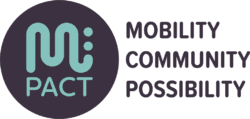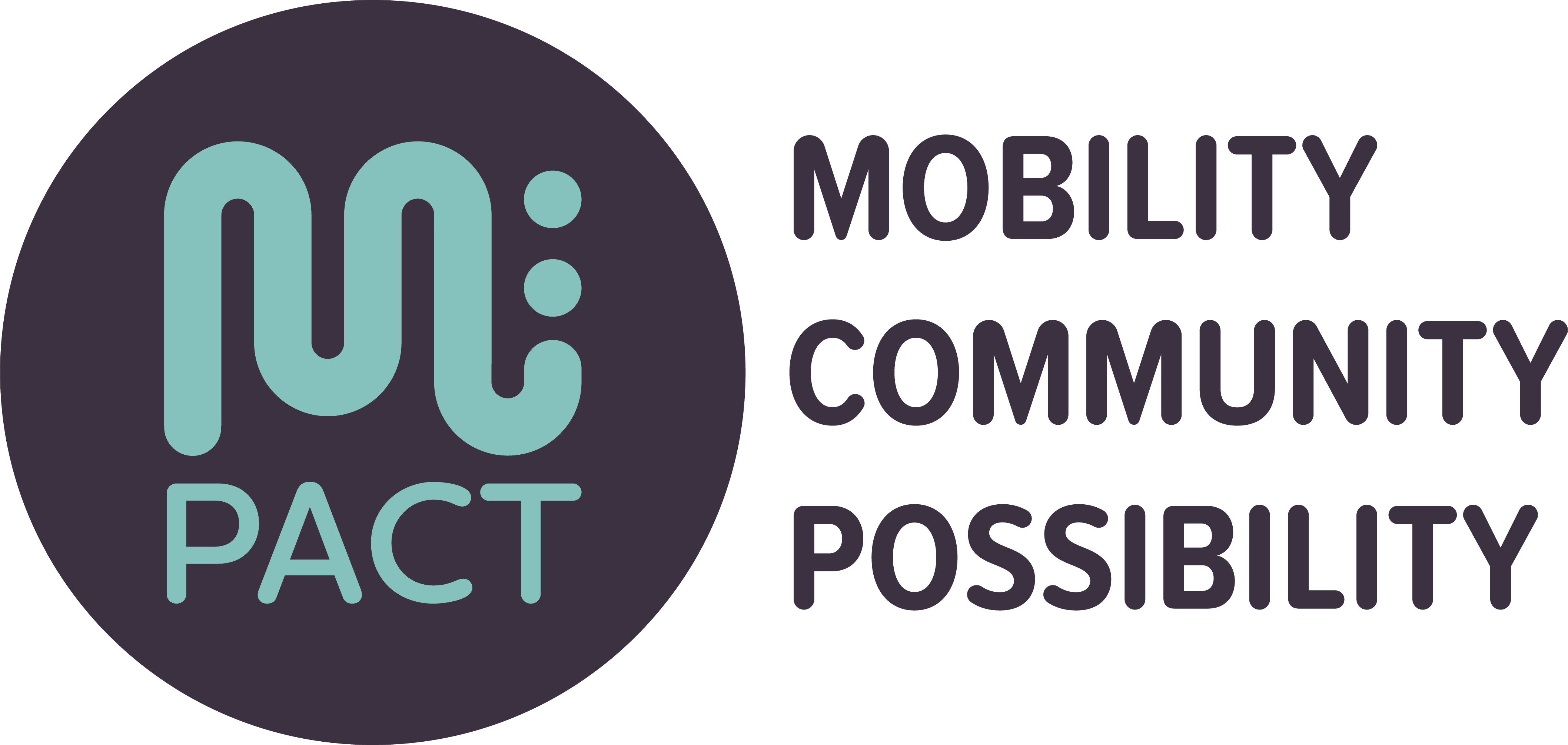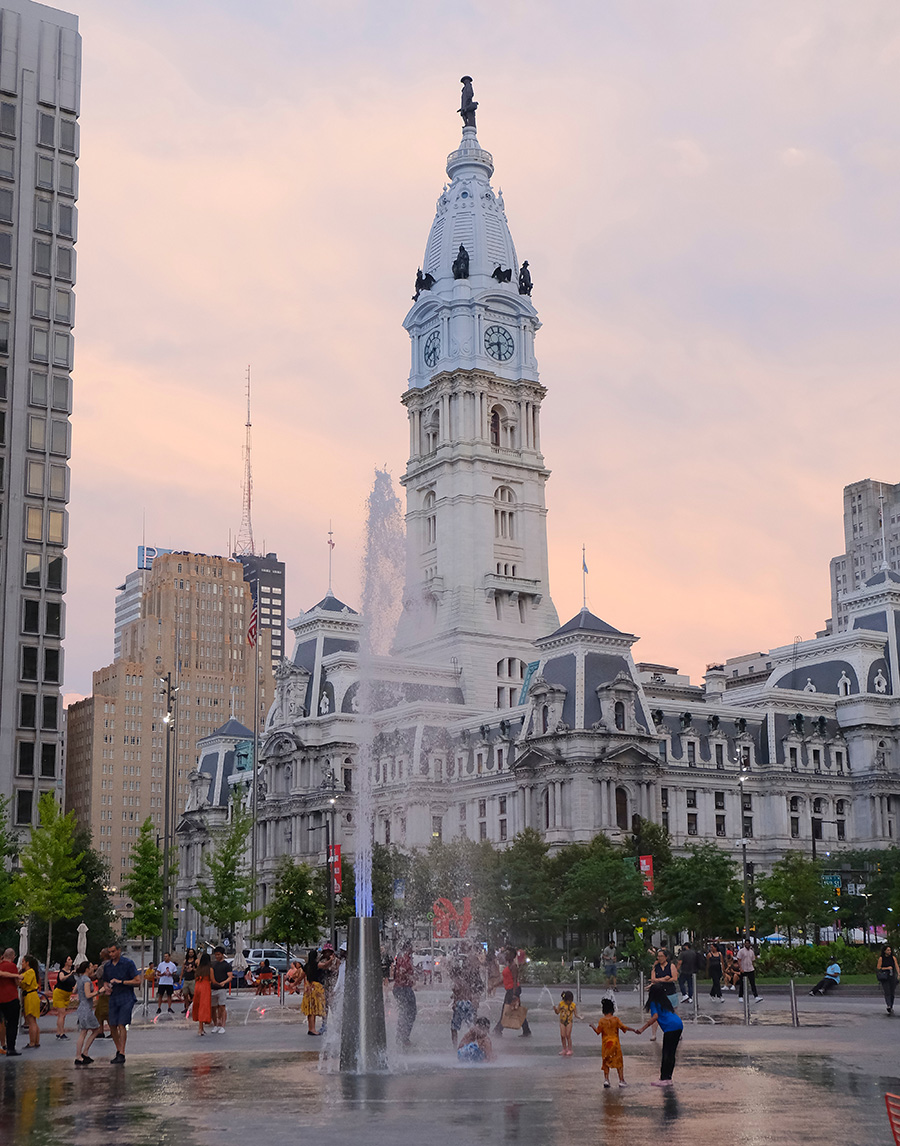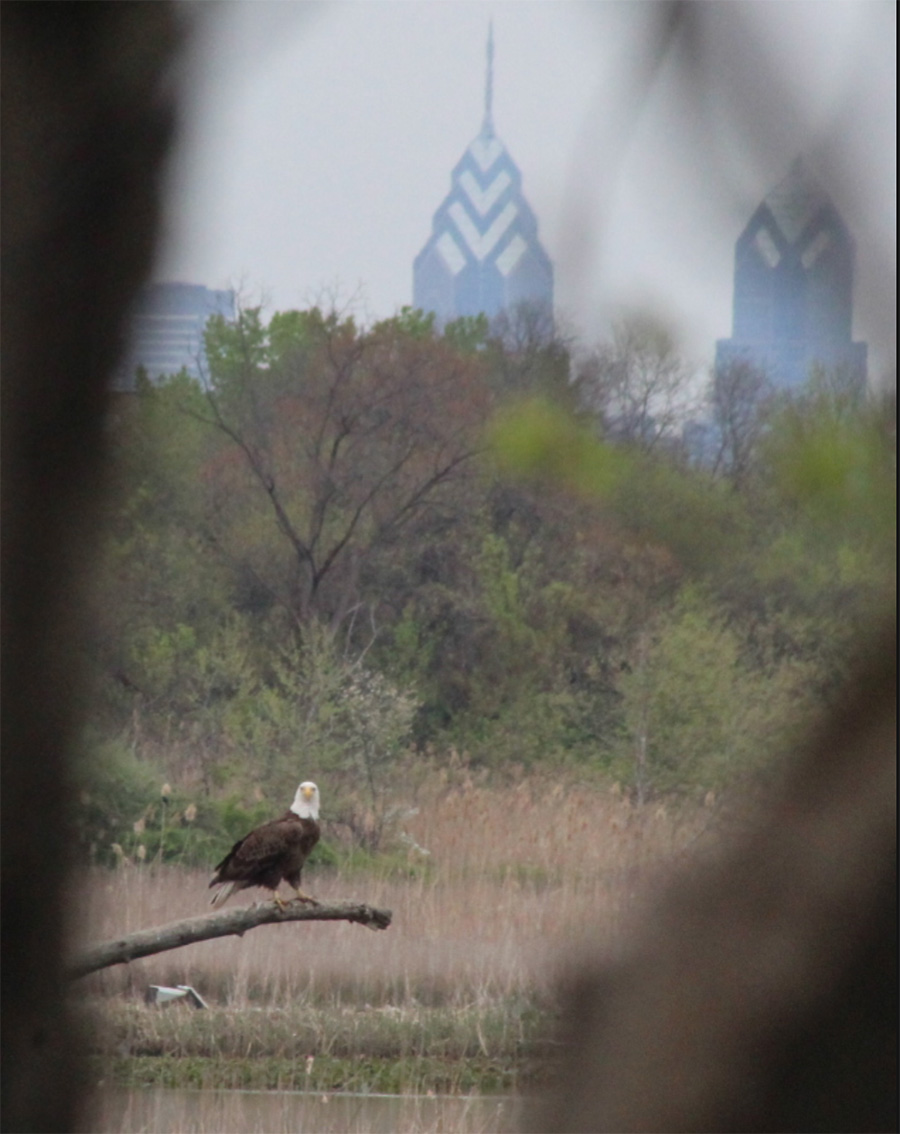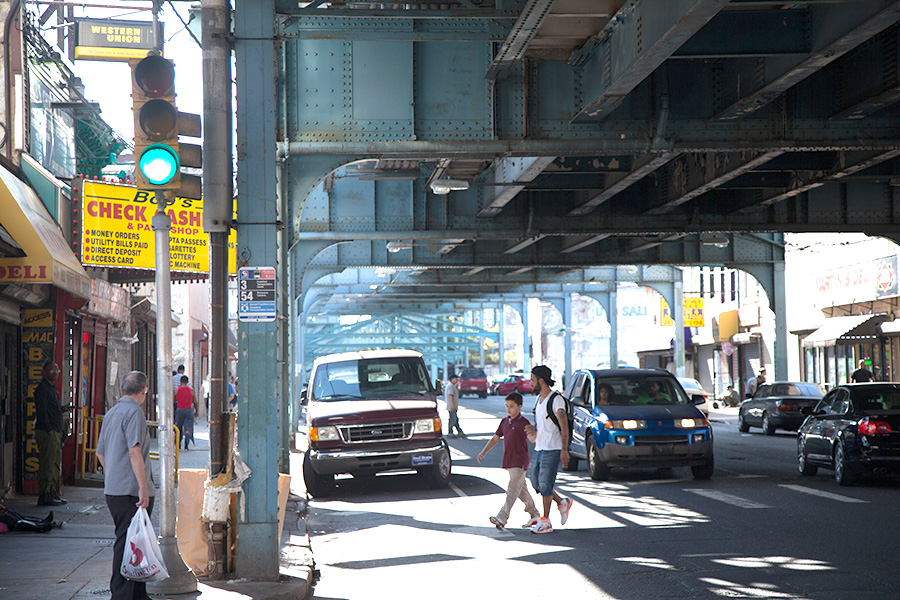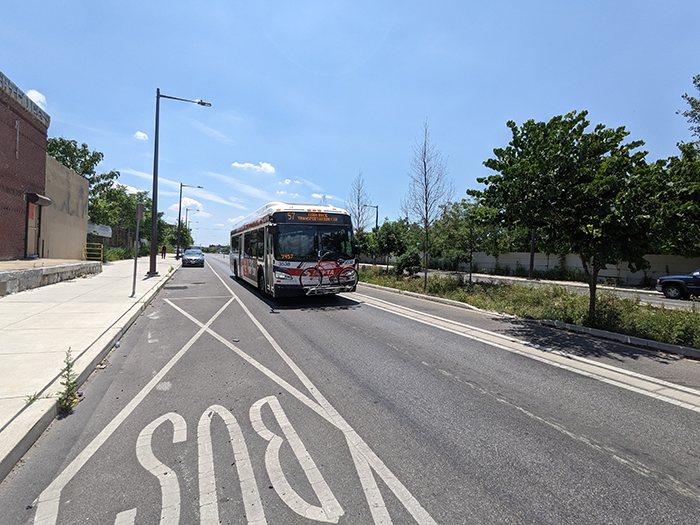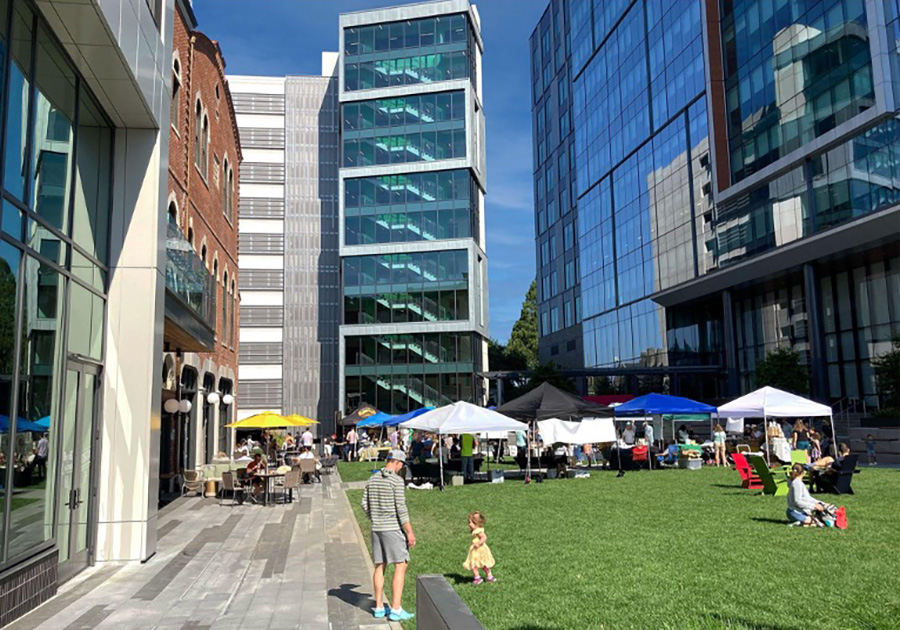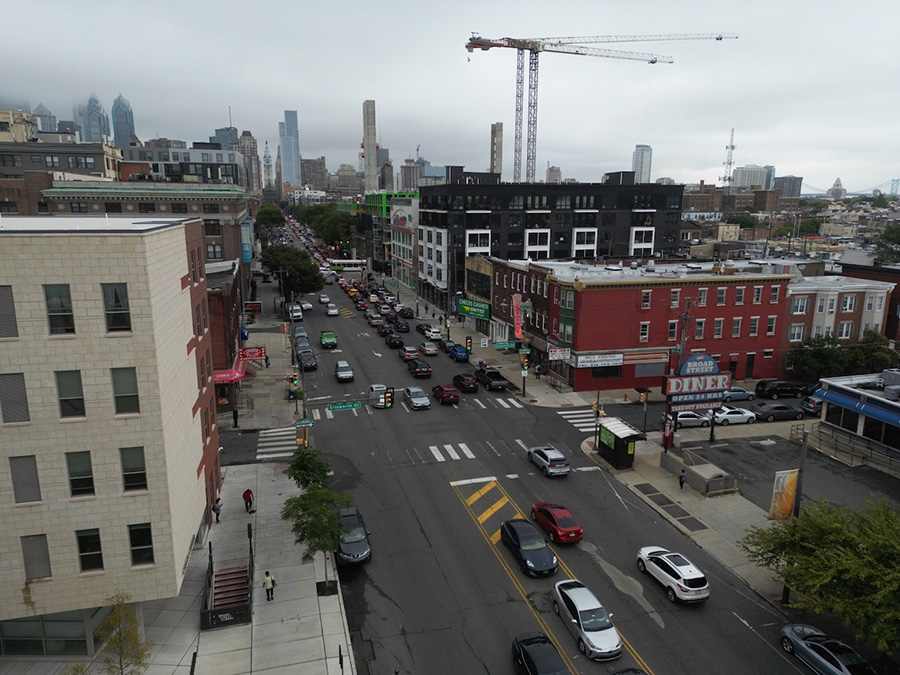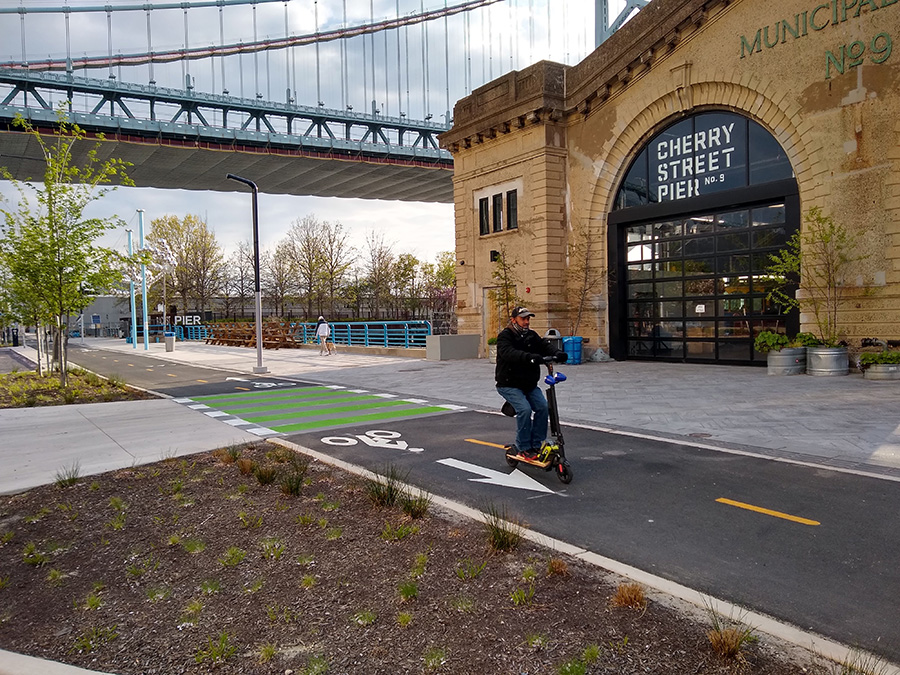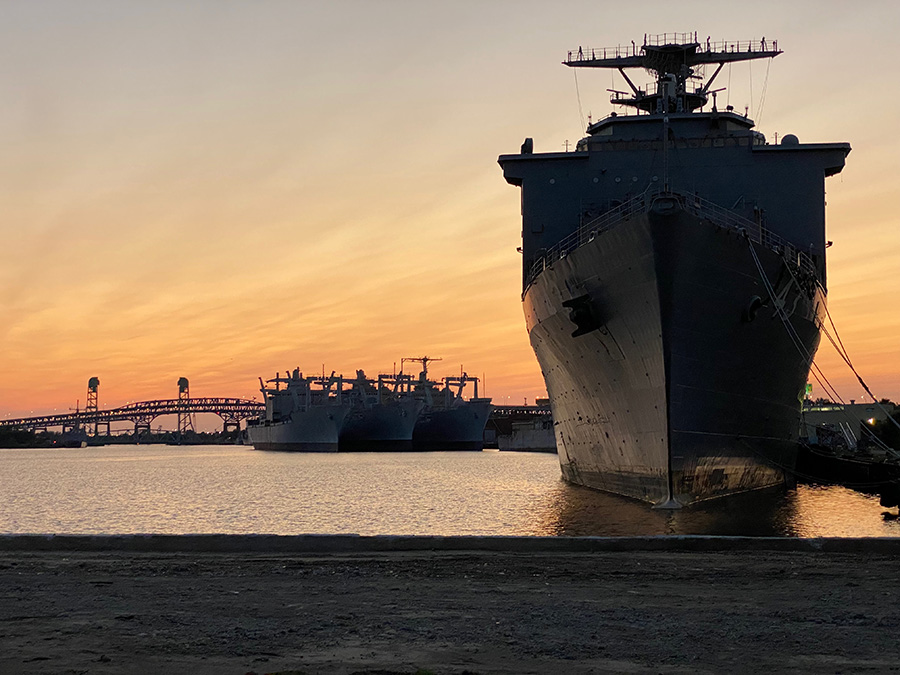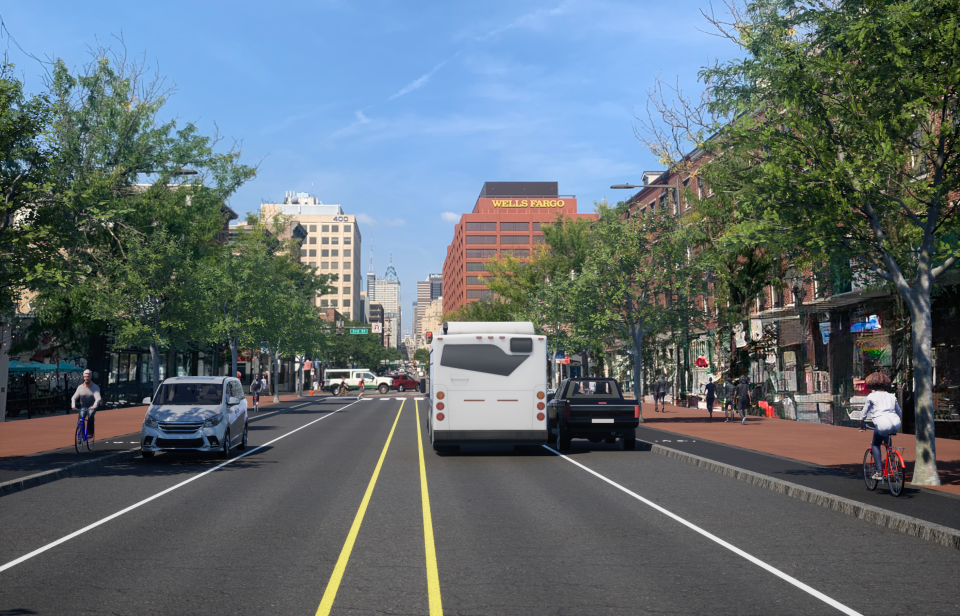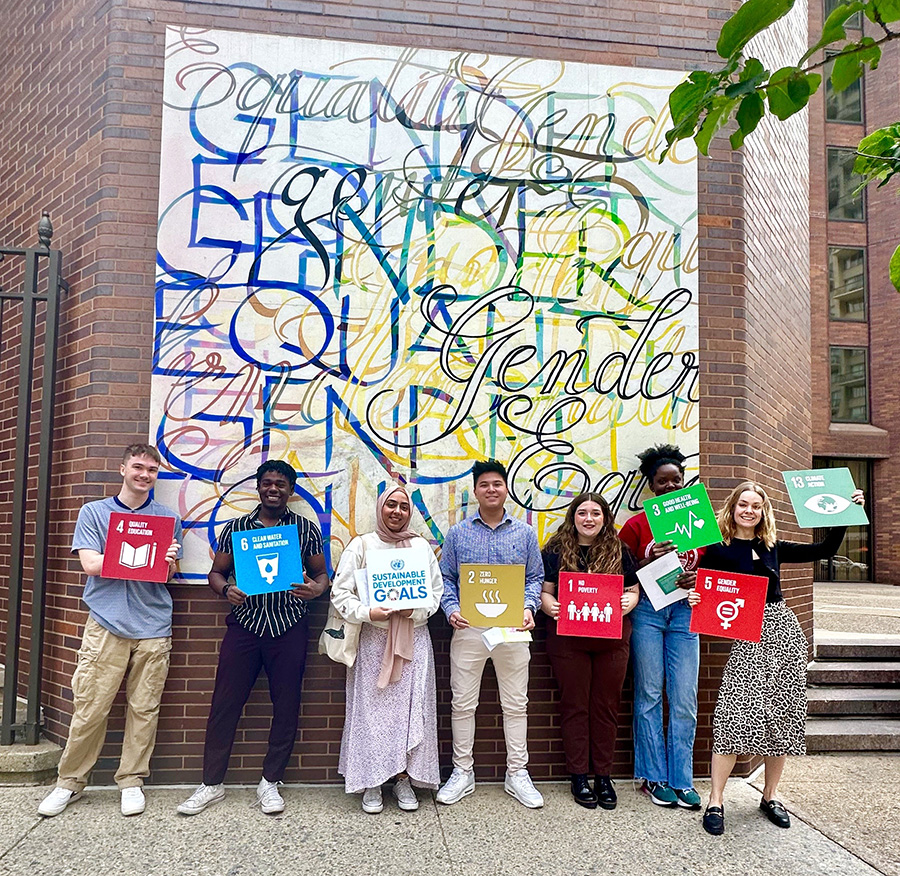Mobile Workshop
MW15-Center City’s Grand Public Spaces
$45
Explore two of William Penn’s original squares – Logan and Center – and the public spaces that tie them together. Along the way learn about 300 years of planning history and varying contemporary solutions to reinvigorating, accessing and managing public open spaces. Penn’s surveyor, Thomas Holme, laid out the street grid and five squares still evident in City Center Philadelphia. Today, the Benjamin Franklin Parkway cuts a traffic-laden swath through the northwestern corner of the grid even as it visually and physically links Fairmount Park and the Philadelphia Museum of Art to Logan Square (now a traffic circle) and City Hall (which occupies the original center square). Several new parks and open spaces line the Parkway: Sister Cities Park, Love Park (aka JFK Plaza), the Municipal Services Plaza and Dilworth Park. Recent efforts to reimagine these public open spaces – to encourage more activity and enhance the surrounding architecture, businesses, and transit – feature varying approaches to landscape design, public engagement, management structure, and funding. Learn from those who manage these places about efforts to make them more multi-modal and less auto-centric.
Businesses, Architecture, Design, 2024 Conference, Public Space, Community Engagement, Planning, Transit.
Mobile Workshop
MW14-A Refuge in the City
$65 includes lunch
Take regional rail to Southwest Philadelphia. The nearby John Heinz National Wildlife Refuge at Tinicum, the first urban wildlife refuge in the nation, protects Pennsylvania’s largest remaining freshwater tidal marsh, with 1200 acres, ten miles of trails, a canoe ramp and opportunities to see birds, native wildlife and plants. End with Eastwick, Philadelphia’s lowest-elevation neighborhood. Redlined in the 1930s, the close-knit neighborhood nonetheless thrived into the 1950s, but then lost homes to eminent domain and airport parking. Today, the City of Philadelphia is working with Eastwick residents to address flooding, environmental justice and quality of life.
Updated description as of 10-14-2024.
Photo: John Heinz National Wildlife Refuge at Tinicum
Mobile Workshop
MW16-Kensington: A Misunderstood Neighborhood
$65 includes lunch
The Kensington neighborhood of Philadelphia once was a center for textile manufacturing, an industry that generated more than 300,000 local jobs. But when factories closed after World War II, a long period of disinvestment followed. Today Kensington is notorious for its open-air drug market and the presence of transient drug users along commercial corridors and transit stops of the raised Market-Frankford line, known as the L. The housing stock is old and the poverty rate is 45%, yet the area has assets: its walkability, residents and businesses who care and strong neighborhood-based organizations. The transit line is another big asset, but also threatens residents with gentrification, as luxury apartment complexes shoot up along the Avenue. Hear from community members and leaders about their efforts to invest in human capital, affordable housing and resident health as well as efforts to resist displacement and maintain local control of property and businesses.
Walking, Affordable Housing, Businesses, Health, 2024 Conference, Safety, Community Development, Transit, Corridor Planning.
Mobile Workshop
MW17-American Street: The Road to Green and Complete Streets
$45
American Street in the heart of North Philadelphia tells a story of a corridor in transition, from an era of factories to disused blocks of vacant lots to a new generation of transit-supportive green and complete streets. It’s also a story of collaboration between city streets and water departments, the transit agency and state and federal partners. Completed in 2021, the two-mile streetscape project now manages over 50 acres of storm water with green infrastructure, includes wider sidewalks and grade separated bike lanes and serves buses, freight and changing communities. Walk the corridor with practitioners involved to hear first-hand about coordinating complex elements, lessons learned and the ways this right-sized corridor impacts forthcoming Trolley Modernization and Vision Zero investments.
Photo: American Street with green stormwater infrastructure. Credit: City of Philadelphia
Bicycling, Walking, Design, 2024 Conference, Transit, Climate Resilience, Corridor Planning, Street Design, Sustainability.
Mobile Workshop
MW09-Suburban Riverfront TODs
$45
Explore transit-oriented developments (TODs) along the Schuylkill River northwest of the City of Philadelphia in the growing borough of Conshohocken and its adjacent development areas, Whitemarsh Township and Spring Mill. Find out how Montgomery County’s Transit-Oriented Development Model Ordinance guides municipalities in adding appropriate building typologies and station-area features to their zoning codes for use around rail stations. Hear from local practitioners and leaders – from Montgomery County, SEPTA and local municipalities as well as property owners – about factors for successful developments.
New Date and Time This Mobile Workshop, originally scheduled for Monday, October 21 at 1pm, is now Tuesday, October 22, 12:30pm – 5:15pm. Updated 7/18/2024.
Photo credit: Montgomery County Planning Commission
Station Design, Zoning, 2024 Conference, Community Development, Planning, Policy, Transit-Oriented Development (TOD).
Mobile Workshop
MW18-Transit-Oriented Communities: Urban and Suburban
$45
Please note: Due to changes in train schedules, Mobile Workshop 18 now starts at 12:45 pm (not 1:00 pm as originally stated).
One of the great things to see and experience at the conference is Philadelphia’s deep history as a transit-oriented region. But, as in many cities around the country, there’s demand for more housing near transit. SEPTA recently launched a Transit-Oriented Communities program to work with cities and developers to find solutions that fit suburban and urban locations. Hear about a couple of projects. In small town Ambler, the main street developed in response to trains that have been running since 1855. A TOD project on a parking lot offers the opportunity for a mixed-use, multimodal development that strengthens what makes Ambler special. Back in the city, where space is tight, find out how the Archdiocese of Philadelphia converted their property near a subway station for a new walkable development – part of the Yes in God’s Back Yard (YIGBY) movement.
Photo: Transit-oriented development at Broad and Ellsworth.
Affordable Housing, Mixed-Use Development, Station Design, 2024 Conference, YIGBY Movement, Joint Development, Transit-Oriented Development (TOD).
Mobile Workshop
MW19-Transforming Philadelphia’s Central Delaware Waterfront
$65
Bicycle approximately 8.5 miles along the Delaware River and learn about the Master Plan for the Central Delaware River, which guides policy and investment strategies for 6 miles of riverfront. See some of the changes since the plan’s adoption in 2012: six waterfront parks, three connector streets and nearly three miles of the Delaware River Trail. Construction also is underway for the $329 million Park at Penn’s Landing, which will consist of a cap over Interstate 95, linking the waterfront to historic Old City. These improvements, together with a Waterfront Transit Study, have sparked $1.1 billion in adjacent private investment since 2014. Learn about the Delaware River Waterfront Corporation and partnerships involving the City of Philadelphia, PennDOT, SEPTA and other stakeholders. See how the mixture of economic and community development makes the waterfront a treasured public amenity for residents and visitors alike.
Bicycling, Trail-Oriented Development, Economic Development, Land Use, 2024 Conference, Highway Capping, Community Development, Street Design.
Mobile Workshop
MW21-New Connections to the Navy Yard
$45
The U.S. Navy’s former Philadelphia shipyard is now one of Philadelphia’s fastest growing employment centers and a unique part of the city, with biotech and fashion companies amidst historic buildings, riverfront open space, and big ships. It’s a leading model for repurposing military and industrial assets for a diversified and inclusive modern economy. But it’s a mile from the end of SEPTA’S B Line (aka Broad Street Line) and separated from the rest of the city by I-95. With an additional 8.9 million square feet of commercial and residential development still to come, more transit access (building on the current shuttle buses) will increase the number of people who can work in and enjoy The Yard. To this end, SEPTA and the Navy Yard worked together to develop a plan for regional transit connections and the Navy Yard is piloting a new autonomous shuttle. See the Navy Yard and hear from the Philadelphia Industrial Development Corporation (PIDC), the public-private economic development corporation that manages the Navy Yard, about how transit is part of its ambitious expansion plans.
Transportation Demand Management, Autonomous Vehicles, Economic Development, 2024 Conference, Transit.
Mobile Workshop
MW20-Old City Vision Plan in Action
$45
2026 marks America’s 250th birthday. To get ready, Philadelphia’s Old City neighborhood, home to the oldest continuously inhabited residential street in the nation and the church where George Washington and Ben Franklin worshipped, began a visioning process. The result, Vision2026, sets goals for optimal private development and defines the elements of a high-quality public realm. Goals include fostering civic life through great places, reoccupying vacant buildings, protecting neighborhood-serving retail, better connecting to nearby neighborhoods, and encouraging car-free travel as peoples’ first choice. Implementation is already underway, via changes in zoning and parking policy as well as physical improvements, such as raised bike lanes on Market Street and new and reimagined parks. If your city has historic districts, this could help shape your game plan.
Bicycling, Walking, Urban Place Management, Businesses, Economic Development, Zoning, 2024 Conference, Community Engagement, Climate Resilience.
Mobile Workshop
MW22-Sustainability Goals: Inspiration and Action
$45
Hear about two approaches to understanding and enacting sustainability goals, within communities and in systems and practices. The Global Philadelphia Association works with local partners to fund and create murals focused on United Nations Sustainable Development goals. Each project brings grant dollars to local nonprofits, educational institutions and artists, building local engagement with what sustainability goals mean in context. As you walk from mural to mural, also hear about SEPTA’s Sustainability Playbook, which defines and measures progress toward 13 goals across 3 pillars: natural environment; healthy communities and workforce; and economic vitality. Expanding transit and transit-oriented communities is inherently sustainable, but there are ways to change practices to reduce waste and consumption, lower emissions, increase green acreage, lower costs per passenger and make spending decisions in ways that bolster a more diverse workforce. From the visionary to the specific, get the Philadelphia story and think about your own.
Photo credit: Global Philadelphia Association
